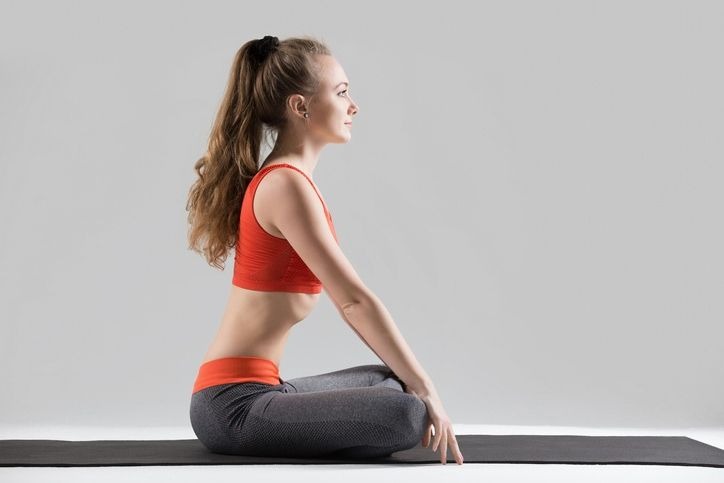The best anti-anxiety breathing techniques?
Caution : You must consult your doctor for your health. This page presents only a personal and alternative point of view which should not be considered as an attempt to prescribe medicine.
According to recent scientific studies, breathing can have real benefits for the physical and emotional health of individuals.
Indeed, when you are faced with a particularly distressing situation, it allows you to relax and better manage your emotions.
Are you prone to regular anxiety attacks?
If so, here are the best anti-anxiety breathing techniques that will help you better manage these phases.

Abdominal breathing
Abdominal breathing is one of the most recommended techniques for dealing with anxiety.
It can calm the mind and de-stress in a relatively short time.
Also called chest breathing, this method involves leaning on the abdominal area to remove toxins and negative energy from the body.
Thus, the range of respiratory movements performed in this setting acts on the abdominal organs to induce perfect neuromuscular relaxation.
To practice stomach breathing, you need to do the following.
- Make yourself comfortable in a quiet place and put your hands flat on your stomach, ideally below your navel.
- Breathe in slowly but deeply, while taking care to inflate your stomach. This phase should last between 3 and 5 seconds.
- Hold your breath for just 1 second.
- Then breathe out for 6 seconds through your nose while gradually drawing your stomach in. Note that the longer this phase, the better you will feel the effects of relaxation.
- Finally, keep your stomach tucked in and your lungs empty for a brief moment, then inhale again.
Repeat this exercise as many times as necessary in order to release the anxiety.
However, it is advisable to perform this maneuver at least 3 times a day in order to eliminate the anxiety.
Cardiac coherence
The cardiac coherence is a very effective breathing mechanism against anxiety attacks.
It is a relaxation and biofeedback technique that is used to increase heart rate variability.
If you wish to practice this exercise, you will need to follow the following steps.
- Preferably sit in a sitting position and keep your back straight.
- Breathe deeply but slowly through your stomach.
- Breathe in for 5 seconds, then hold the air in your lungs for about 10 seconds. During this phase, try to focus your attention on the heart area.
- Then breathe out gently through your mouth for 5 seconds. Don't hesitate to take your breath away.This will allow you to resume the movement of inspiration in a natural way.
For optimal efficiency, consider practicing cardiac coherence by following the “365” method recommended by the French psychotherapist David O'Hare.
This formula involves taking a 5-minute break 3 times a day to perform the exercise and breathing at least 6 times per minute.
Alternate breathing
The alternate breathing is a method that helps to fight against anxiety.
It actually consists of breathing alternately through one and the other nostril.
This form of breathing also promotes better mental health and a perfect nervous balance.
Here are the main steps to follow in order to complete this exercise.
- Sit up, ideally on a cushion, cross your legs and keep your back straight.
- Breathe out slowly through both nostrils, then cover your right nostril with your thumb.
- Inhale gradually through the left nostril for 4 seconds.
- Then use your ring finger to plug the left nostril, then breathe out through the right nostril for 8 seconds.
Then breathe in through the right nostril, plugging the left nostril and so on.
Repeat this maneuver for 5 to 7 minutes depending on your level of anxiety to relieve stress and replenish positive energy.
Breathing with visualization
Breathing with visualization or breathing with projection is a formidably effective method of eliminating anxiety immediately.
To implement this technique, first think about settling in a calm and peaceful place.
- Stand with your eyes half closed and your arms at your sides.
- Breathe in calmly for 5 to 8 seconds by visualizing peaceful places, joyful events or facts that have marked you positively. Let your imagination mentally represent a pleasant memory or a person whose presence gives you pleasant sensations.
- Breathe out through your mouth, imagining yourself spreading this feeling of well-being throughout your body.
To benefit from the anti-anxiety effect of this exercise, it is strongly recommended that you practice it very early in the mornings and when you are going through a particularly stressful situation.
In short, breathing has a very close link with your emotional state.
To eliminate anxiety, you will therefore need to influence its pace.
By applying the techniques listed in this guide, you can relieve anxiety and quickly regain emotional balance.
❤ The ultimate guide to breathing
Intermittent Breathing : Discover the method to quickly relieve your anxiety and chronic fatigue (positive effects from the first use).Read also :
Previous article : Deep breathing to combat stress?
Next article : Which method of relaxing breathing for a relaxation session?

